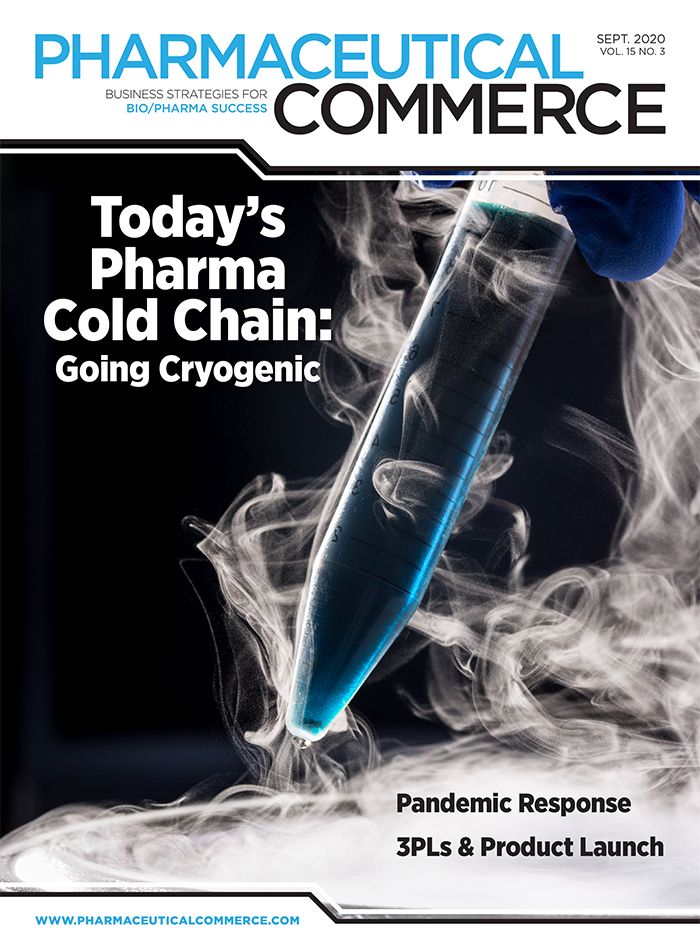3PL selection as part of product launch process
The importance of partners being flexible and optimizing their processes in today's virtual climate
It might seem that in this world of distancing and delays, working with external partners would be one of the most difficult parts of launching a pharmaceutical product. When it comes to third-party logistics providers (3PLs), however, who are one of the first distribution decisions for manufacturers to make, that doesn’t seem to be the case.
Since decisions about 3PL partners heavily impact state licensing strategy, it’s important that manufacturers move quickly and think ahead on this step. And because this has always been my preferred approach in working through the supply chain process, I’ve found that 3PL partners can show a significant amount of flexibility in how they approach RFPs, introductory calls, capability presentations, and audits. Today, adding in the need to make all of this remote, 3PLs have continued to remain engaged and responsive as we work to define timelines in this world of uncertainty.
Benefits of 3PLs
Before discussing best practices for selecting and working with a 3PL, it’s important to understanding the alternative, and then why many virtual manufacturers choose to work with 3PLs. Instead of using a 3PL partner, another option would be to go direct to wholesale from the CMO. For companies who choose this option, I would argue that they aren’t seeing the full picture of what a 3PL can do for them. People often think of them as only helping with picking, packing, and shipping, but if you find the right partner, they are so much more than that. Of course, there are variations in needs depending on what distribution channel the product is intended for—widespread generic to retail pharmacies, specialty to clinics or hospitals, direct delivery to patient, etc. —but across the board, some of the benefits of working with a 3PL are that they:
- Reduce the legwork for state licensing by allowing virtual manufacturers to operate under their licenses.
- Provide leverage and convenience for buying power and rates for freight, packing, and shipping supplies by passing their costs to the manufacturer at a nominal markup.
- Provide full order-to-cash functions, managing accounts receivable, data management and reporting, invoicing, chargebacks, returns, etc. This support is valuable for manufacturers who are often working with lean resources and manpower.
- Provide storage for the large product lots they are producing, avoiding the need to lease extra storage space or sell to the rate of production, which is usually not feasible.
Selecting partner
For manufacturers who are still looking for their partners, it was always best to conduct an on-site visit when possible, since that’s the best way to assess cultural and value alignment. For obvious reasons, this is no longer option No. 1. As a result, companies have had to figure out how to translate the personable experience of an on-site visit through a computer camera.
On the 3PL side, many vendors and partners have been very intentional about putting their own spin on the process to make it come to life. They bring in all the subject matter experts that are relevant to the project (which was more difficult when we were all traveling), so that the client can get answers to their questions and meet everyone involved. I’ve seen one 3PL bring in a cameraman to show the process of picking and packing a product, which added significantly more value than pre-taped footage, as it allows for the opportunity for live questions and interaction. Another potential vendor sent samples of validated packaging out to the customer.
For those in the process of selecting 3PL partners ahead of launch, the first priority would be to keep the process moving forward since it will have an impact on your state licensing strategy. Virtual manufacturers often don’t physically touch their products, so many states take the stance that it’s the 3PL that needs the license since they are handling and shipping the product. Therefore, many state licensing applications require manufacturers to list its selected 3PL—some even require a copy of the letter of intent or a fully executed contract—to prove that an adequate handler is in place.
For manufacturers with existing arrangements with 3PL vendors, the most important thing to prioritize is regular, open, and transparent communication. Your partners should be providing you with business updates, COVID-19 impacts, CMO import statuses, and carrier updates.
Virtual audits
Amid the COVID-19 pandemic, many manufacturers have delayed official audits until it is safer for them to conduct an on-site visit. In these cases, they may sign a letter of intent that includes a contingency of having a successful on-site audit. This allows for contracting and implementation to move forward, but still protects the manufacturer from being locked into a contract without having all the process knowledge and quality signoff it needs. For this to happen successfully, it helps for the 3PL to be over-communicating about the dates that they expect to reopen for in-person visits. Doing so allows for the manufacturer to proactively schedule a visit, and for the 3PL to prioritize visits from different customers based on their product launch dates.
There is also the option of selecting virtual solutions to reduce the in-person components of the audit. Some of these include quality questionnaires, secure data rooms for SOP review, and virtual audits. During this instances, how a virtual solution might play out is largely dependent on the comfort level of the manufacturer.
Attention to detail
In today’s increasingly challenging and uncertain product launch landscape, it is critical for 3PLs to maintain flexibility in service support. Many biopharma companies are performing labors of love to keep their products moving toward launch and require a partner to match their dedication. Ask questions, and show your ability to provide customized solutions. It’s not easy to convey passion and commitment virtually, but this can be the biggest differentiator in a competitive market.
In many ways, while operating in a virtual world isn’t ideal, this is a great time to vet partners on how they work in a crisis. The industry today is seeing, in real-time, which companies are able to rise to the occasion and optimize their processes to be as flexible for a product launch effort as possible. Many have responded to selection times shortened from the traditional four months to two months. They have also allowed clients to begin implementation earlier to ease concerns about current uncertainties. My trust in this space has only increased as I’ve watched organizations change and evolve to serve customers in this unique and difficult time.
About the author

Jessica Randolph is Senior Account Director for Commercialization for Two Labs
